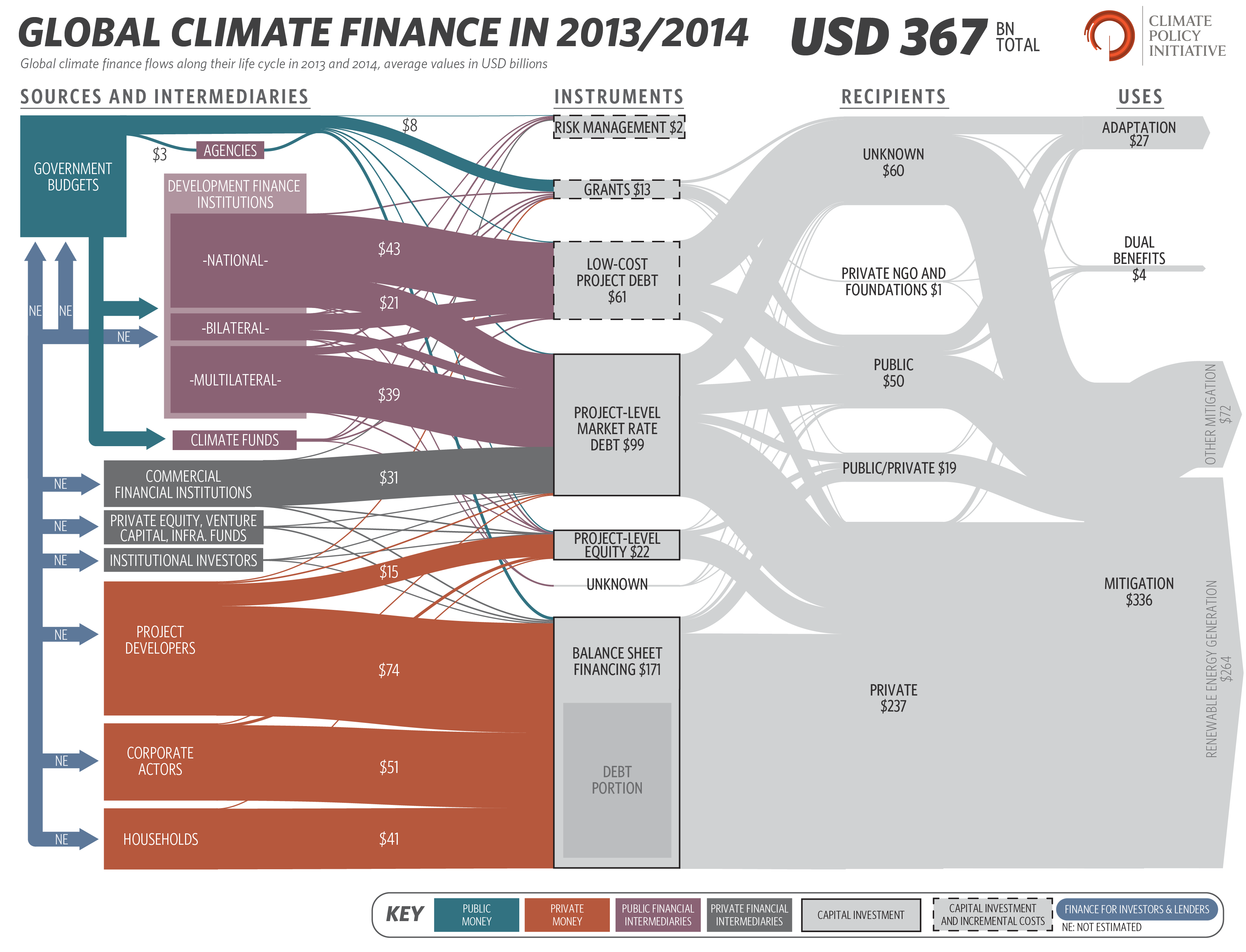Since 2010, CPI has supported decision makers from the public and private sectors, at international, national and local levels, to define and track how climate finance is flowing from sources and actors, through a range of financial instruments, to recipients and end uses. Providing decision makers with robust and comprehensive information helps them to assess progress against real investment goals and needs. It also improves understanding of how public policy, finance and support interact with, and drive climate-relevant investment from diverse private actors, and where opportunities exist to achieve greater scale and impact. Below, I share a few lessons we at CPI have learned from six years of work on these issues.
Sound data enables decision makers to evaluate progress towards their goals
Assessing whether financial resources are being used wisely, and what are the entry points to further scale up investments, requires sound data to identify sources of finance, the mix of financial instruments and investments, and the uses to which finance is put. The more comprehensive, clear and comparable data is, the easier it is to draw insights and share best practice.
The data produced by CPI’s tracking work is referenced by donors and policymakers in the context of the UNFCCC negotiations and used in national development plans and strategies drawn up by governments and financial institutions. It forms the solid foundation on which ours and others analysis is built.
Understanding how public and private climate finance interact is key
Robust information about how public resources and private interests interact will help to ensure public interventions effectively target, and eliminate the cost, risk, and knowledge gaps that impede private investors. Spent wisely, pubic resources can drive private investment while reducing the burden on taxpayers, optimizing returns for international and domestic public and private investors alike. CPI has focused much of its work at this intersection of the public and private actors.
CPI’s Global Landscape of Climate Finance highlights that private investors strongly prefer domestic markets and that, while public finance remains the driver of much private investment, it will not be enough on its own to meet countries investment goals. Familiarity with and confidence in domestic policies and regulatory frameworks is essential to attract climate-relevant investment because investors must have confidence they can balance risks and returns. National and international public finance play key roles building projects’ bankability by covering viability and knowledge gaps, driving huge increases in investment from the private sector.
CPI’s work analysing projects and portfolios of investments and tracking how to measure how public finance mobilizes private investment provides tools for policy makers to determine how effective public interventions have been. It also informs our work supporting the development of innovative solutions to drive further investment in climate action.
Significant progress has been made on tracking in the last six years
Significant progress has been made on tracking climate finance in the last six years helped in part by CPI’s tracking work and our focus on convening public and private climate finance actors to share insights and experiences and integrating both public and private source of climate finance data.
CPI’s reports were the first to provide a comprehensive picture of all climate finance data reported to or by other organisations including the Organisation for Economic Co-operation and Development (OECD), and Bloomberg New Energy Finance. We highlighted opportunities to improve data collection and harmonize reporting could help build a more robust overview.
The latest edition of CPI’s spaghetti chart showing the flow of climate finance from sources to end uses

The engagement of key stakeholders in compiling these reports, and particularly providers of international public finance, has informed efforts by multilateral development banks, bilateral financial institutions and national development banks to close some of the gaps we reported in 2011. Our tracking methodologies have also been applied by others who have themselves developed innovations to suit national circumstances.
Many tracking gaps and challenges remain, and these are the subjects of a blog series that will be published over the coming weeks. By continuing to shed light on the intersection between public policy, finance and private investment, our work will continue to help decision makers optimize the use of their resources.
- Challenge 2: Robust climate finance tracking at the national level to help countries meet their NDC goals more effectively
- Challenge 3: Increasing understanding of how finance is mobilized to support efforts to spend resources wisely
Click here to sign up for updates on this and other aspects of our work.

